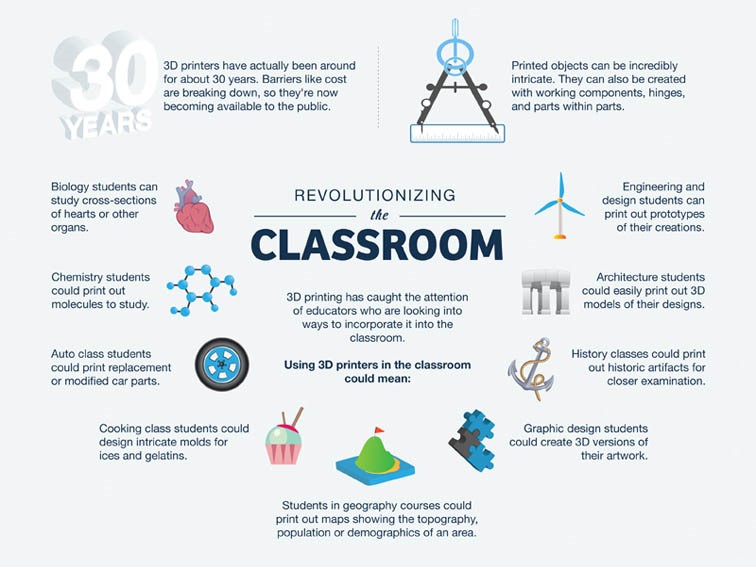What is 3D printing?.
A 3D printer works by “printing” objects–but instead of using ink, it uses more substantive materials–plastics, metal, rubber, and the like. It scans an object–or takes an existing scan of an object–and slices it into layers it can then convert into a physical object.
In fact, what it is you’re actually producing depends on what is being printed: if it’s toy jewelry, rubber balls, and plastic chess pieces your after, you’re printing not an analogue of the real thing, but the real thing itself. Confused yet?
As far as how this can be used in education, it’s a matter of bringing objects out of the computer screen and into the hands of students for inspection, analysis, and other processes that can benefit from physical manipulation. In that way, 3D printers may eventually be able to bridge the gap between the physical and the digital–use a screen to find what you need, then print it into existence.
What Is 3D Printing and How Does It Work? | Mashable Explains (VIDEO)
Tomorrow’s engineers, scientists, designers and problem solvers need the best tools to build their futures. Just about every aspect of the Australian curriculum system can benefit from incorporating 3D printing.

11 Ways 3D Printing Can Be Used In Education
- Engineering design students can print out prototypes
- Architecture students can print out 3D models of designs
- History classes can print out historical artifacts for examination
- Graphic Design students can print out 3D versions of their artwork
- Geography students can print out topography, demographic, or population maps
- Cooking students can create molds for food products
- Automotive students can print out replacement parts or modified examples of existing parts for testing
- Chemistry students can print out 3D models of molecules
- Biology students can print out cells, viruses, organs, and other critical biological artifacts
- Math students can print out “problems” to solve in their own learning spaces, from scale models to city infrastructural design challenges


Comments are closed.